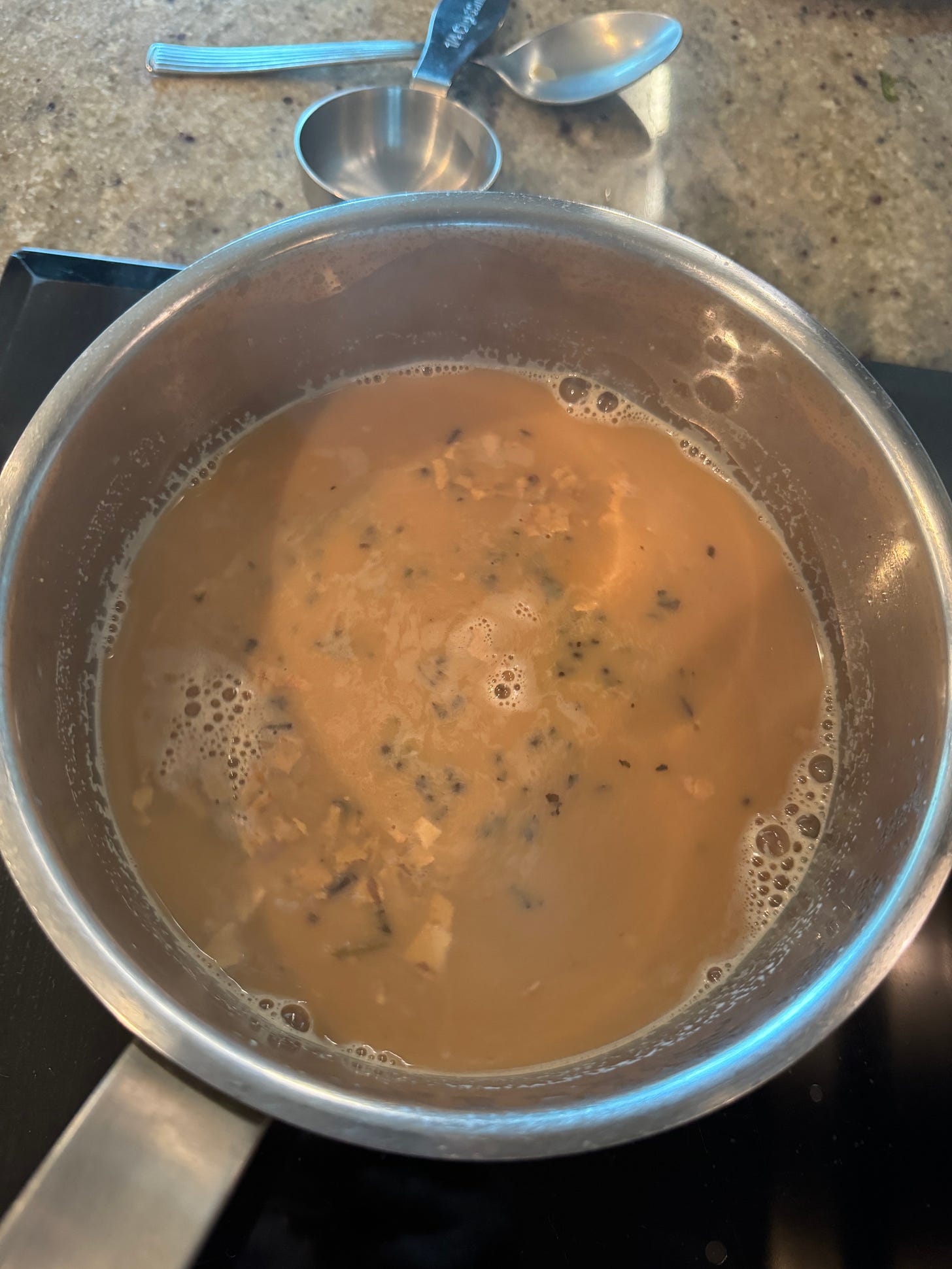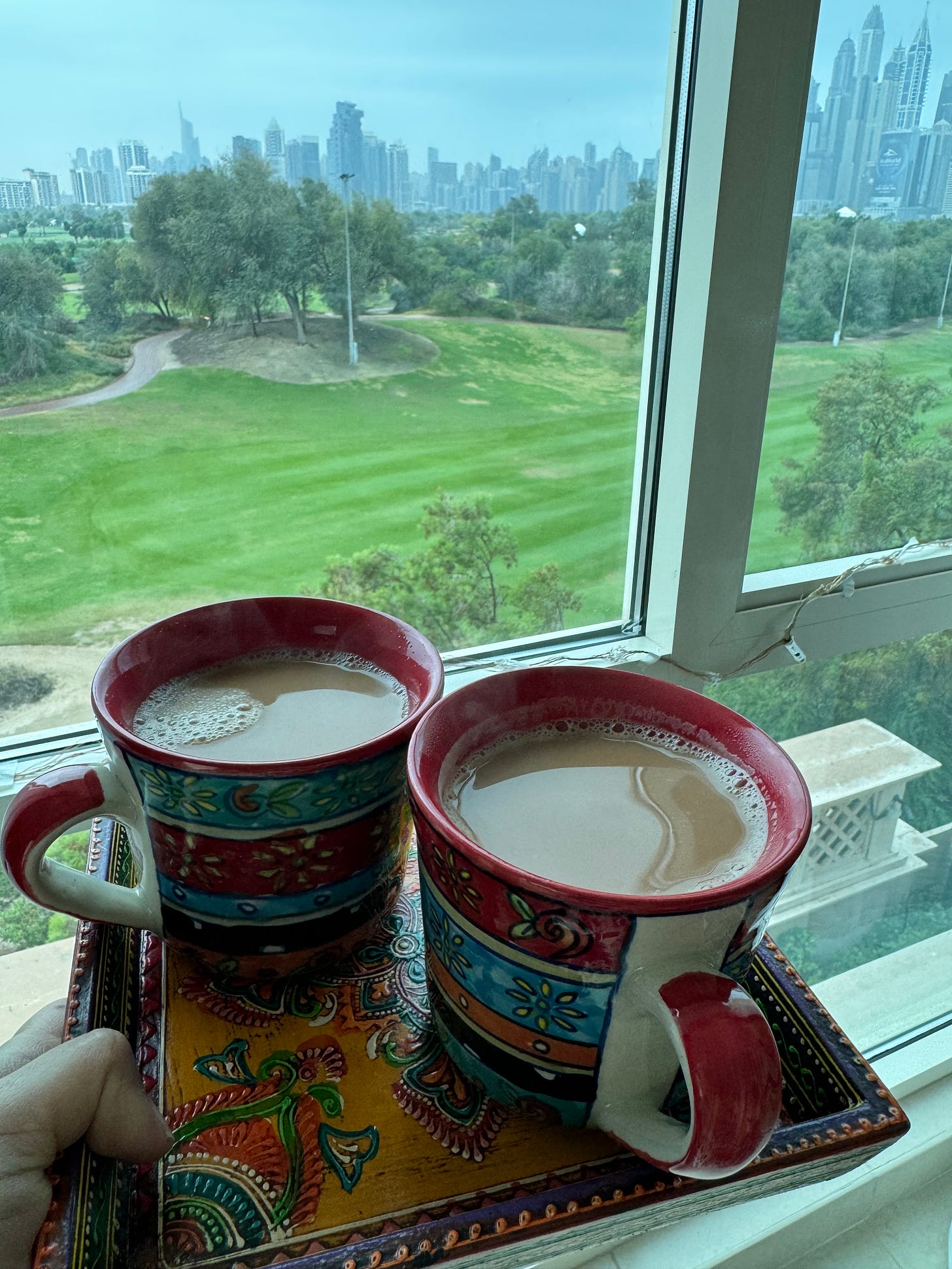For some reason the start of the new year made us both think of chai.
Chai means several things to a South Asian. For most of us, it’s THE start to our day. A fresh cuppa of milky tea boiled to the desired colour and consistency with a choice of flavourings is often the first thing we make in our kitchens each day. As the day progresses, it’s also a pause or break in the daily humdrum of a person’s busy (or not) schedule – whether they are an elderly person reading the newspaper, a factory worker on their afternoon break, a cubicle dweller glued to multiple monitors in their office or a rickshaw wala who has stopped at their regular roadside tea stall.
Chai is also an opportunity to catch up with someone over a conversation. Whether it’s a surprise or planned visit from a guest at your house, chai is always a part of the agenda. Chai is ritualistic. Perhaps like the evening cuppa with family as everyone returns home. An old favourite piece by Candace Rose Rardon I stumbled upon on the internet rightly said, ‘Home is a cup of tea’.
Having chai with someone is about spending time with them, having a chat, sharing your day, sharing stories, lending an ear – it has so many meanings. It’s often an initiation into many things – for many a first cup of chai they made or had was a rite of passage.
I remember sipping one of my first sips of chai, sitting on the kitchen counter top after my grandma, Badi Mummy, boiled a pot, post-lunch for herself and my grandpa, Daddyji. Badi Mummy and Daddyji would like their tea milkier than anyone else in the family. “Adda dudh, te adda paani” they would describe it in Punjabi– meaning half milk and half water. An addition of two small spoons of their preferred cha-patti (tea leaves) and their sugar free version would be simmered till the velvety liquid turned a shade of light caramel. Badi mummy’s cuppa would be strained into her cup while the remainder chai in the pateela, would see the addition of a spoonful of sugar for Daddyji. A quick boil and the chai was quickly strained and the cups brought to them so that they could sip on their Chaa while it was still scalding hot. Such a chai is often called “Doodh-Patti” in North India, translating to “Milk and (tea) leaves”. If the milkiness wasn’t enough or if they were in a mood to indulge, they would even add a spoon of “Malai”, or fresh cream, that would float on top on their cups. We’ve always been a family of dairy-loving Punjabis you see!
Sometimes, when I would hanker for it, Badi Mummy would make a little extra Chaa and strain some for me in a tiny (approx 100 ml) steel glass that was my designated cup. My steel glass was called a ‘Glaassi’ owing to its tiny size. I would get just 2-3 sips but I loved it. Small children aren’t really encouraged to drink tea so hence the limited amount. “Kids should drink milk and not tea or coffee”, I was told. But since their Chaa was heavy on the milk, Badi Mummy wouldn’t mind slipping me a few sips.
The chai I make now is far less milkier, much stronger and almost always with some fresh ginger. It does have sugar but I do add an extra spoon in my husband’s mug as he likes it much sweeter. The Glaassi has graduated to a big mug but the love for chai still stays strong.
I don’t think I can make and drink the milkier version my grandparents and a younger me used to savour but I do get that strong chaa might not be everyone’s cup of tea!
Since there are many kinds of chai people make and prefer in the Indian subcontinent – from Sulemani to Noon chai, Doodh-patti to Karak chai and so on, a conversation on chai with a any tea lover, is never simple. Most chai drinkers have strong opinions about how a good cup of tea should be made. Not just South Asians, the Brits are known for it too. It’s no wonder that the U.S. embassy in the UK had to recently issue a statement covering their tracks when an American chemist suggested adding salt to to make a better cup of tea in her latest book. While the Brits are offended, I don’t think the Noon chai aficionados would disagree.
So, how do you like your Chai?
10 most searched recipes in Dec-Jan
More Chai Coffee musings on Kitchenpostcards
Dilli, Islamabad, Karak Chai aur Charcha
Flavourings for Chai and a trusty Chai recipe
Adrak Wali Chai (Milky Ginger Tea)
Beaten or Phitti Hui Coffee ~ Homemade Indian Cappuccino
Taj Jiva Spa inspired Vishuddhi Chai
Cook Along on Youtube
Learn to make Indian style curried scrambled eggs, popularly called Anda Bhurji. Anda Bhurji paired with a paratha or even toasts are a great accompaniment to your Chai! Cook or bake along with us on YouTube! And if you haven’t yet, subscribe to the channel.








